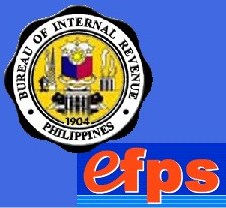Paying Taxes The Easier Way
 In my blog post about taxing the self-employed Pinoys, I mentioned about the time-consuming ways of filing and paying the dues by the taxpayers. While the fixed-income taxpayers are no longer required to file annual income tax returns (their employers take care of withholding and remitting the dues to the government) for many years now, there practically was no effort to make it easier for the self-employed and professionals to pay their taxes. I asked in my article if this could be a reason why there is such a very low tax collection from the sector.
In my blog post about taxing the self-employed Pinoys, I mentioned about the time-consuming ways of filing and paying the dues by the taxpayers. While the fixed-income taxpayers are no longer required to file annual income tax returns (their employers take care of withholding and remitting the dues to the government) for many years now, there practically was no effort to make it easier for the self-employed and professionals to pay their taxes. I asked in my article if this could be a reason why there is such a very low tax collection from the sector.
Look at these, if you happen to be self-employed or a professional in private practice and renting your place of business, aside from securing barangay and mayor’s permits in January of each year, you will also have to manually file and pay the following to the Bureau of Internal Revenue (BIR) on the dates specified below:
A) Monthly:
- BIR Form 1601E – Monthly Remittance Return of Creditable Income Taxes Withheld (Expanded) – On or before the tenth (10th) day of the month. Amount of tax to be withheld and paid to BIR is 5% of the rental payment.
- BIR Form 2551M – Monthly Percentage Tax Return – Not later than the 20th day following the end of each month. Percentage tax to be paid is 3% of gross income.
B) Quarterly:
- BIR Form 1701Q – Quarterly Income Tax Return for Self-Employed, Professionals, Estates, and Trusts Including Those with both Business and Compensation Income – Due on or before April 15, August 15 and November 15. Amount of income tax to be paid varies from 5 to 32% of net taxable income.
- BIR Form 2307 – Certificate of Creditable Tax Withheld at Source – to be issued to Lessor on or before the 20th day of the month following the close of the taxable quarter.
C) Annual:
- BIR Form 0605 – Payment Form – On or before January 31 – the Registration Fee is PhP500.00 only.
- BIR Form 1701 – Annual Income Tax Return for Self-Employed, Professionals, Estates, and Trusts – Deadline is April 15 of each year – Amount of income tax to be paid varies from 5 to 32% of net taxable income less quarterly income tax payments made.
The above items constitute what I mentioned in my previous article as tedious and time-consuming process that a self-employed taxpayer has to undergo to pay his taxes to BIR. The manual filing of the above forms and the payments of the taxes due thereon are what I am saying to be too much of a burden for small businessmen to comply with regularly. So, why not make paying taxes easier for these taxpayers? Can the BIR to expand the coverage of Electronic Filing and Payment System (eFPS) and accommodate all taxpayers who are willing and capable of using the system?
As it is now, all of the above-mentioned BIR Forms are listed as among those allowed in eFPS and a question contained on the system overview as to who is eligible to use the system says “Qualified taxpayers who need to file and pay their taxes to the Philippine government are encouraged to use the system“. A check on the qualifications of taxpayers who may avail of eFPS seems to indicate self-employed individuals with connection to the Internet may do so. However, the same overview shows the current user coverage of eFPS includes:
- Large Taxpayers
- Volunteering Taxpayer
- Top Twenty Thousand Companies
- Local Government Units
- Bidder/s
- Bank Borrower/s
- Stock Broker/s
- 10 Million Paid Up Capital
- CAS(Computerized Accounting System)
- Volunteering Large & Non-Large Taxpayers registered with the Integrated Tax System and with e-mail account and internet access; and
- Volunteering BIR National Office employees
Are you a self-employed taxpayer who wants to pay your taxes the easier way? Why don’t you try enrolling on BIR’s eFPS and see if you are qualified? If you are qualified to use eFPS, it could make your life easier and make you happy paying your taxes.




The BIR should concentrate as a matter of priority on self-employed professionals such as doctors and lawyers as s well as top executives of big companies and famous entertainment personalities. P-Noy mentioned in his recent SONA that the aforementioned individuals were paying a mere 9 billions in annual taxes while salaried employees were paying 100 billions annually.
From such very glaring discrepancy, it’s easy to deduce that only unscrupulous BIR personnel, imaginative accountants and resourceful tax lawyers could have earned well in manipulating their crooked tax returns. Regarding small business like market vendors and sari-sari stores, the BIR must do away with the cumbersome documentary requirements which usually beyond the comprehension of the education-challenged small business owners.